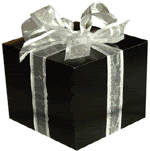We are taking a detour from our usual Bookanistas post to celebrate something huge. (Though be sure to check below for linkies to our fellow Bookanistas as they talk about books that rock!)
And now for The News. =)
Our good friend and fellow QueryTracker blogger Carolyn Kaufman has a brand new book published!!! Suzy was lucky enough to beta this book so she can vouch for its awesomeness. It reads like a novel and (to warn you) is very hard to put down. Read on for insight plus a sneak peek at what's in the book.
How did you decide to write The Writer’s Guide to Psychology?
While I was in grad school, I noticed a lot of discrepancies between what I was learning and seeing in the therapy room and what I saw in the popular media. I started investigating, and discovered that there’s a branch of psychology – Division 46, Media Psychology – that addresses the problem. And though a few scholarly books have been written, and though there are some consultants available to accomplished writers through big organizations, there was no interesting, accessible, affordable guide on clinical and counseling psychology that was readily available to writers – so I decided to write one!
Could you give us a quick rundown of The Writer’s Guide to Psychology?
Sure.
- · Chapter 1 explores and corrects common myths and mistakes we see in the media.
- · Chapter 2 teaches the writer how therapists think about human behavior, both to help them create stronger characters, and to help them portray therapy realistically.
- · Chapter 3 delves into the therapist’s profession, describing the different degrees your characters can have (psychiatrist, psychologist, or social worker? for example), how therapists are trained, and the real ethics of doing therapy (another big place writers make mistakes).
- · Chapter 4 takes you behind the closed door of the therapy office and provides you with more character-building tricks, including ways to get tough characters to open up.
- · Chapter 5 helps you understand the difference between a “normal” problem and a disorder, as well as how diagnoses are made.
- · Chapters 6, 7, 8, and 9 explore the most common diagnoses, including uncommon tidbits to help you portray the disorders realistically.
- · Chapter 10 is all about the psychology of villains and psychopaths.
- · Chapter 11 gives you the ins and outs of biological interventions, from medications to “electroshock” therapy and cutting-edge treatments like Transcranial Magnetic Stimulation (TMS).
- · Chapter 12 teaches you to portray emergencies realistically (yet another place lots of writers make mistakes), including suicide and homicide assessments and hospitalization.
What impact would you say completing THE WRITER’S GUIDE TO PSYCHOLOGY has had on you personally and on your writing?
This might sound a little silly, but it taught me that I really could reach out to people using this medium, ie books. And now that I’ve done it once, I know I can do it again.
I think what I’m trying to say is that I feel a sense of competence, which we psychologists call “self-efficacy,” about writing nonfiction. That makes me even more excited about this book; it also makes me excited about future books that I don’t even know I’m going to write yet.
Who has been the greatest influence on you with respect to encouraging you to write and become a published author?
Probably my parents – they raised me to believe I could do anything if I put my mind and a great deal of effort into it. As I’ve gotten older I’ve become more aware of the negative messages some women and some artists get: that they can’t accomplish certain things. I was never given those messages, and my parents supported my dreams when I wanted to be a writer just as strongly as they supported me when I decided I wanted to be a doctor.
My mom in particular has been a huge support on THE WRITER’S GUIDE TO PSYCHOLOGY. When I first created my ArchetypeWriting.com website, she read every single thing I wrote and provided wonderful feedback. She let me bounce ideas off of her and read my proposal and then every word I wrote for the book itself. When I was asked to add an Introduction to the book in a very short period of time, she was there to read it in the few hours I had before I needed to turn it in.
How can we purchase your book?
The book is available from all the big and small online retailers like Amazon.com. You should also be able to find the book in brick-and-mortar stores like Borders!
Congratulations, Carolyn!
For some awesome reads check out the Bookanista links below:
Christine Fonseca recommends JOEY FLY, PRIVATE EYE in BIG HAIRY DRAMA
Elana Johnson raves about MATCHED







